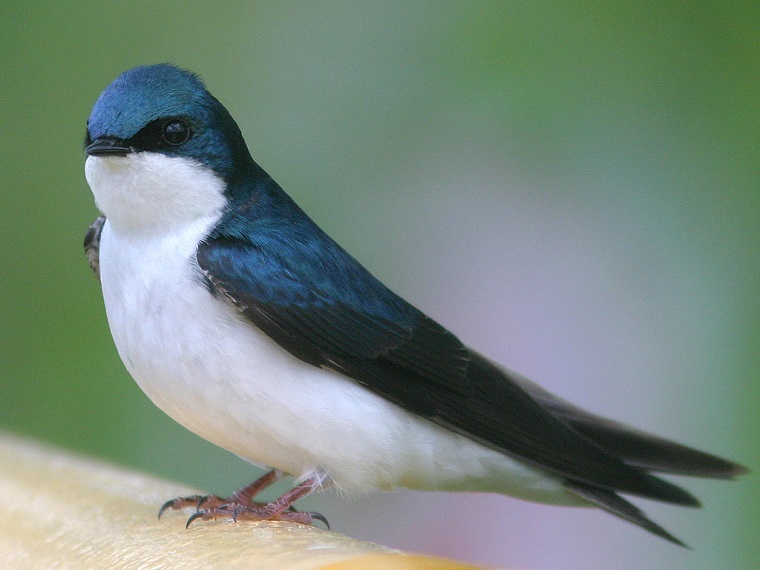Feathered Jet Setters: Tree Swallows Map out Complex International Routes and Stopovers During Migration
By Alana Wilcox
2 April 2019

Look up and you may see catch a glint of florescent blue streaking across the sky. Darting through the air to catch insects along the waters edge and collect twigs for their nest in early spring, tree swallows are currently travelling thousands of kilometers north from their winter homes in the south to their breeding grounds across Canada and the US. This perilous journey begins in March, with a later return southward in summer. Tree swallows have been making this journey for millennia, but the exact routes and stopovers they make on their migratory journey have long eluded scientists.
Samantha Knight, an ecologist and laboratory manager in Dr. Ryan Norris’s lab in the Department of Integrative Biology, recently took on this challenge as part of her MSc studies. She analyzed movement data collected by a team of 27 researchers across North America who track tree swallows with small geolocators attached to the birds’ backs. Throughout the birds’ migration, the tiny electronic backpacks – each weighing less than a large paperclip - detect the level of sunlight, which can be used to calculate a bird’s location. After four years of monitoring, Knight and colleagues were able to identify three major routes used during spring and fall migration by populations originating from the prairies, and the western and eastern coasts of the US and Canada.
With the migration routes established, the team then set out to uncover more details about where tree swallows spend their time during the year. The geolocator information helped the ecologists calculate where populations are located within each season. This means that Knight was able to not only define the bird’s summer and winter homes, but show for the first time that many individuals make long stopovers en route in fall, likely to rest and shed old, worn out feathers.
Knight also made another unexpected discovery. Once at their winter home, tree swallows were previously thought to hunker down and stay in place. Instead, Knight found that some birds travel hundred of kilometers throughout winter.
These findings are critical given the staggering declines of migratory songbirds. “Knowing where individual birds go throughout the year is important to understand and mitigate threats,” Knight explains. Like many animals, migratory songbirds face many challenges, including climate change, pollution and habitat loss. Tree swallows are especially vulnerable to changes to pristine open habitats and marshlands. By knowing the bird’s specific locations, says Knight, researchers can predict how populations will respond to environmental change.
Detailed knowledge of the tree swallow’s movements and activities can also help to identify threats to birds at particular times and locations. For example, if a tree swallow arrives at a “low quality” stopover site in fall, such as one with limited food resources, this could impact their ability to breed the next spring.
Establishing these “cause and effect” connections between seasons and across international boundaries is critical for wildlife management, says Norris. “We cannot really begin to design effective conservation and management strategies for migratory birds until we know where they spend the rest of their annual cycle, outside of when they breed in North America.”
Read the full study in the journal Ecological Monographs.
Read about other CBS Research Highlights.